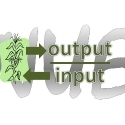06 Mar 2014
Crop Nutrient Balance - Atlantic Canada - Nitrogen
Nova Scotia, New Brunswick, Prince Edward Island
Since nitrogen (N) is a mobile nutrient, producers focus on matching crop uptake requirements as closely as possible. Applying N in surplus to crop needs does not build up a reserve in the soil. However, when amounts applied are deficient, crop growth suffers, decreasing the return of crop residues to the soil and thus depleting soil reserves of organic N. Crop N has been in surplus for much of the past 15 years, compared to being roughly in balance for most of the period from 1971 to 1990 (Figure 1). A large fraction of the N excreted as manure is considered non-recoverable, owing to high rates of loss in the barn, in storage and during handling. The non-recoverable fraction in general is not applied to cropland, though some of it may reach cropland by deposition of volatilized ammonia from the atmosphere. Potatoes are a major crop in Atlantic Canada. Generally grown in sandy soils, managing N without leaching losses can be a major challenge. Large amounts of N are removed by hay (Figure 2). The livestock industry has shrunk in the last few years (Figure 3).
Figure 1. Nitrogen inputs to cropland include legume N fixation, recoverable manure and fertilizer, shown as stacked areas summing to the total input. Removal by harvested crops is shown by the vertical bars. The units are pounds of N per acre of total cropland. Non-recoverable manure N is mainly left on pasture or lost to the air, and is not part of the cropland nutrient balance.
Figure 2. Nitrogen removed by harvest of major crops. Stacked areas sum to removal by these listed crops.
Figure 3. Nitrogen in manure, as-excreted and recoverable, from cattle, hogs and poultry.



